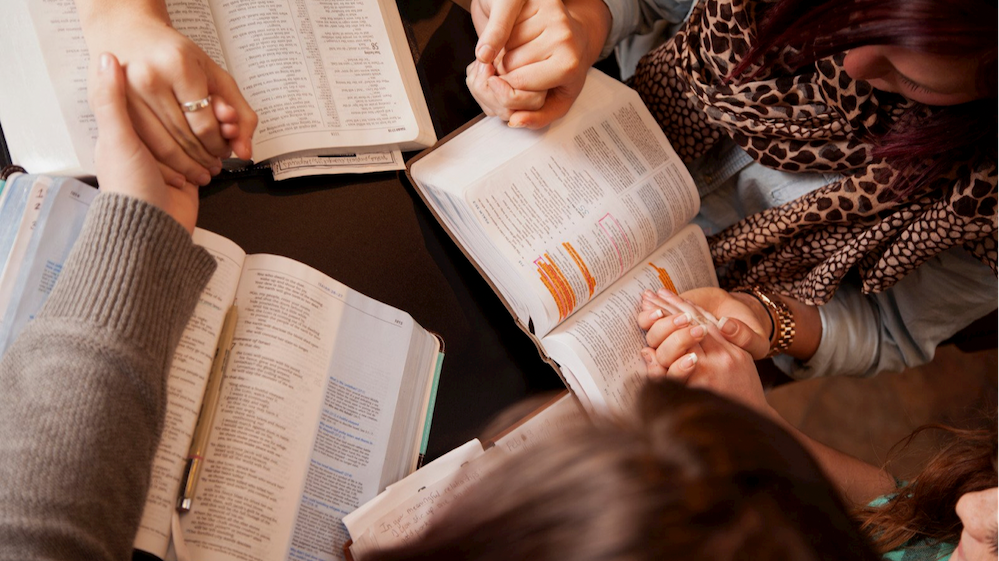My dad used to say: “You gotta know what the Bible says before you can understand what it means.” We have to get the text itself in front of them.
People are shockingly ignorant about the Word of God. We have to get the text in front of them.
People are transformed by the renewing of the mind. It is the truth that sets them free. We have to get the text in front of them.
But we must be careful. I have talked to people who have sworn they will never go back because someone embarrassed them in a small group. Someone asked them to read the Bible when they weren’t ready. We have to get the text in front of people, and we must do it carefully.
There is another reason we must do this with care. This is stereotypically the most boring part of the group. As much as we might hate to admit it, reading a chapter of the Bible together out loud is not always the most interesting part of a group.
We’ve got to get the text in front of people, but we must do it carefully.
Of course, there are easy solutions to these problems. Ask for volunteers to read rather than asking an individual to read. Once someone has volunteered, then you could ask them to read if you wanted. But taking volunteers is a safer route and should be the default mode.
Reading the Bible in small chunks is inherently more interesting than reading the Bible in long sections. Read in small chunks.
But there is a secret to reading the Bible in groups that every Effective Bible Teacher knows, and I want to talk about that now.
Give ‘em something to look for
What made the Where’s Waldo series of books so insanely popular? Why is the game “Hide and Seek” so perennially popular with children? What is it about looking for something that is just so much fun?
Well, I’ll leave the philosophical answers to those questions to the philosophers. Let’s talk about how we can put this basic human dynamic to work. We all love to look for things.
Here’s the key: when you read the Word, give them something to look for.
Here are a couple of go-to examples:
- As we read this text, see what we can learn about God.
- As we read this text, see what we can learn about Christian living.
- This is a familiar passage. See if you can find something you’ve never seen before.
- It is always a good idea to read the Bible listening for emotions. I’d like half of you to listen for what David is feeling and the other listen for what Nathan is feeling as we read this passage.
The key point is variety. This is true in how you read the Word, and it is true in just about every area of teaching. Predictability kills learning. The best way to read the Bible together is any way other than the way you did it last week. Here are a few ideas to add some variety to your group Bible reading:
- If you have someone with an especially good reading voice, have him or her read the whole chapter. You might email ahead of time and ask him/her to be prepared to read that chapter. The right person will be able to read it with pizzazz and make the text come alive.
- If it is a passage with a good deal of dialogue, you might format it like a play and ask several people to read various parts.
- If it is a long passage, I have occasionally asked people to read the passage silently. Again, give them something to look for.
- There are great recordings of the Bible available. I have one where the Bible is read in dramatic fashion. Different actors read different parts. The disciples are on the lake, and there is a storm; you can hear the storm in the background. You might play an audio like this for your group. This will actually do double duty. It will read the text in a fresh way, but it will do something else. Someone in your group will have the idea, “Hey, I’d like to get something like that for my daily Bible reading.”
- There is a cool app called Relax Melodies that has all kinds of neat sound effects – storm, waves, birds, rain on a roof, crickets, wind chimes, all kinds of stuff . . . iPad, iPhone, and Android versions, free and paid. If I ever have the chance, I will use it for background effect in Bible reading in a group. Such a great idea.[1]
- You might read short sections of the Bible together out loud. Of course, this only works if everyone has the same translation, but this is an easy enough problem to solve. Most translations are readily available online for you to copy, paste, and print for your group.
- It is not a bad idea to email your group from time to time and say something like, “We will be dealing with a great passage this weekend. But it is a little long. If you could read Psalm 139 ahead of time, it would be great.”
We have got to get the text in front of the group. Before we tell them what we think of the text, we need to get the text itself in front of the group. Don’t assume everyone knows the passage. Often the power of the Word of God is in picky details in the text. We must read the text together. But, we must do it in a way that is interesting and does not embarrass anyone in the group.
From The Effective Bible Teacher, Josh Hunt
Josh Hunt
Good Questions Have Groups Talking
[1] Kellie Sharpe





